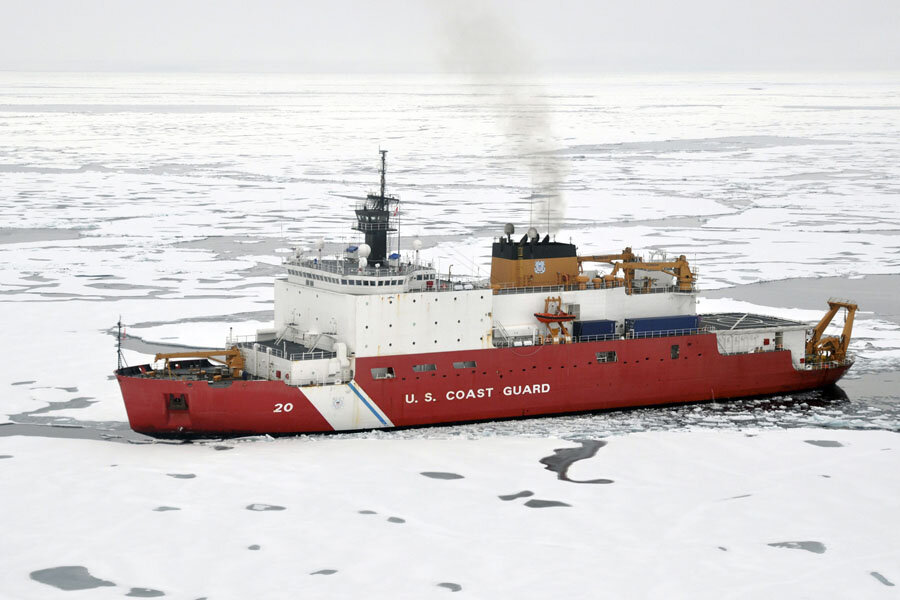Ice breaker: US Coast Guard sends first solo ship to North Pole
Loading...
On September 5, the US Coast Guard Cutter Healy became the first American surface ship to reach the North Pole unaccompanied.
Submarines underneath the ice typically accompany the surface ships.
"As the Arctic region continues to open up to development, the data gathered on board Healy during this cruise will become ever more essential to understanding how the scientific processes of the Arctic work, and how to most responsibly exercise stewardship over the region," said the Coast Guard in a statement.
After cruising out of Dutch Harbor, Alaska on August 9, Healy forged through icy waters with 145 crewmembers and scientists on board, part of an international investigation into the geochemistry of the world's oceans known as GEOTRACES.
Healy encountered ice up to ten feet thick, but powered through to bring the team to the "top of the world" one week ahead of schedule.
This trip marks only the fourth time that a US surface vessel has reached the North Pole, and the first since 2005. Healy has been used for three of the four voyages.
The National Science Foundation funded the voyage with the goal of taking baseline measurements of the air, ice, water, and other environmental variables in the Arctic Ocean, in preparation for the ongoing tourist and petrochemical development of the Arctic. In addition to the planned on-ice scientific experiments, the crew will practice routine safety measures, such as ice rescue.
The 420 ft, 16,000 ton Healy is one of two active US icebreakers; the other is the smaller but stronger Polar Star, measuring 399 feet long and 11,000 tons. The Coast Guard has recorded Healy’s continuous icebreaking capacity as 4.5 feet at three knots, compared to the 6-foot icebreaking capacity of the Polar Star and its inactive sister ship, the Polar Sea.
The scientists aboard Healy tried to gather ice measurements along the journey but were stymied by finding slush instead of solid ice until they were within 100 miles of the North Pole, they said in a Coast Guard press release.
"It’s hard to believe how slushy the ice has been so close to the pole; this was the first area we were confident enough in the ice conditions to allow on-ice science experiments," they wrote. "Despite being thick, the ice we encountered further south was simply too soft and unstable to safely put individuals on."
This voyage comes after the Obama administration announced plans to increase the US presence in the Arctic region.
"President Obama will announce new steps to accelerate the acquisition of additional icebreakers to ensure the United States can operate year-round in the Arctic Ocean," said a White House briefing. "In addition, the Obama Administration will announce efforts to enhance scientific observations of the Arctic to increase our understanding of this vital region."





